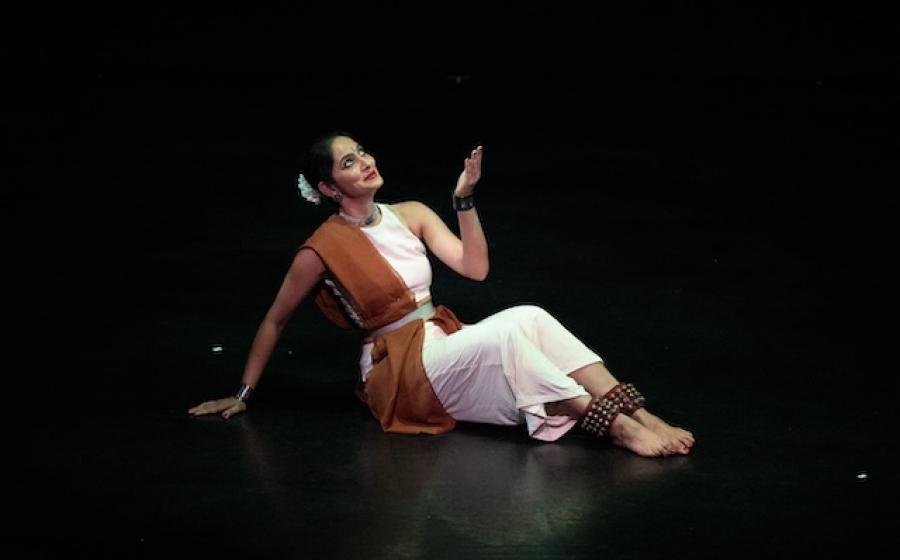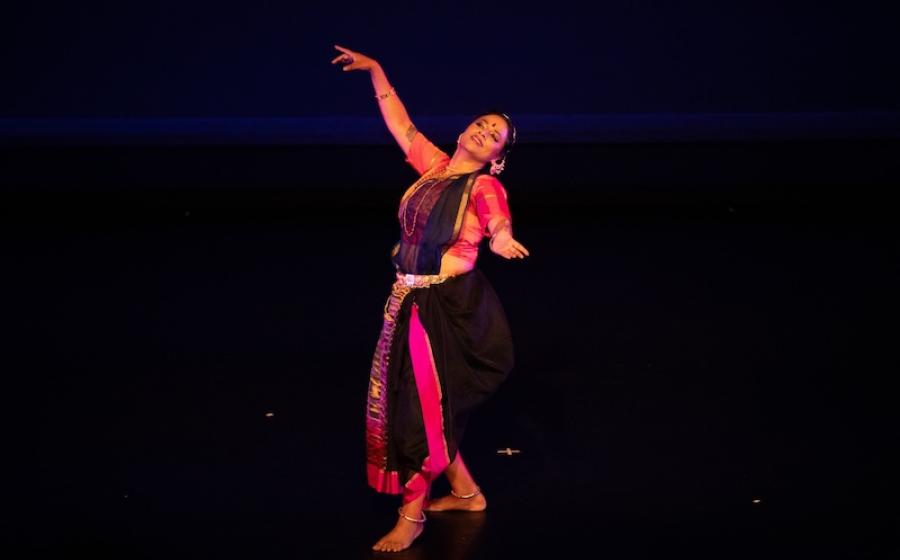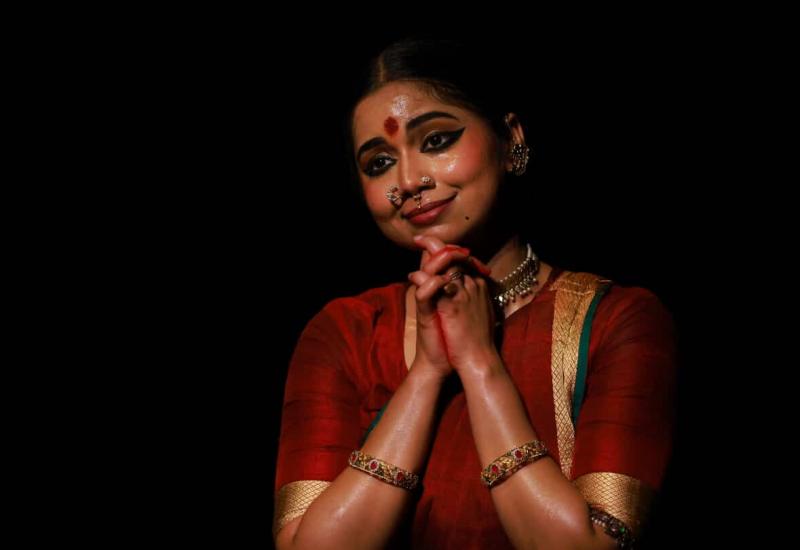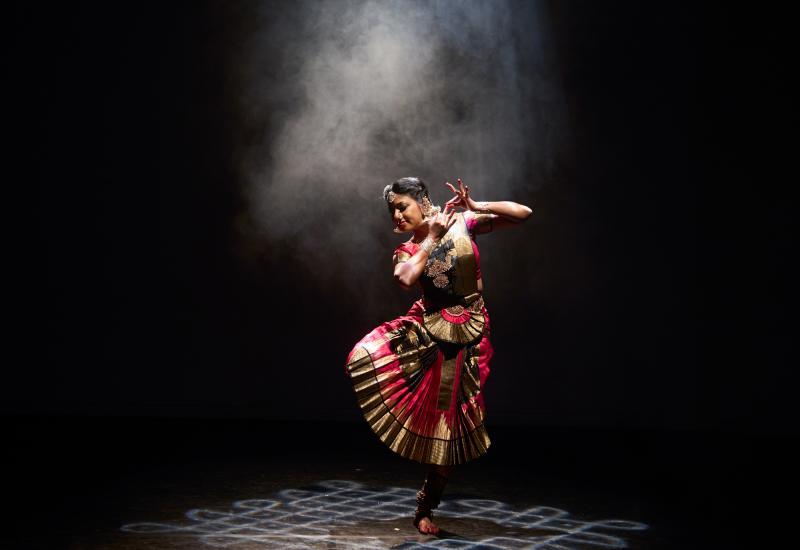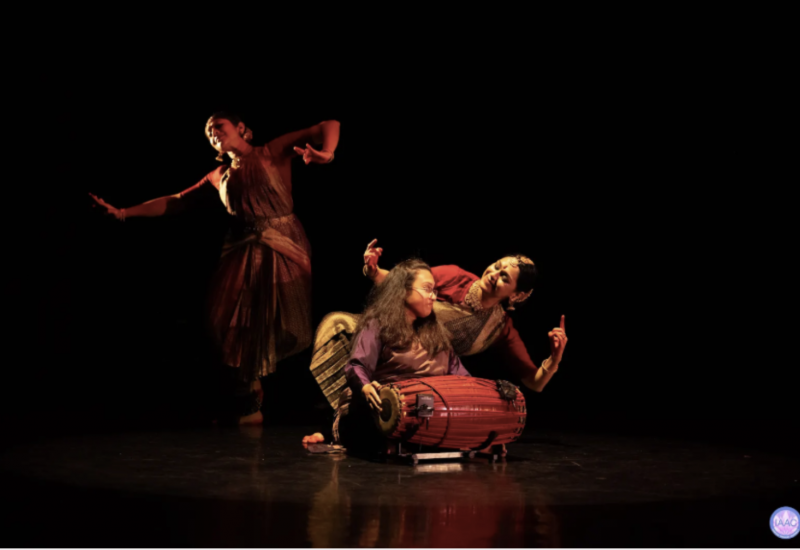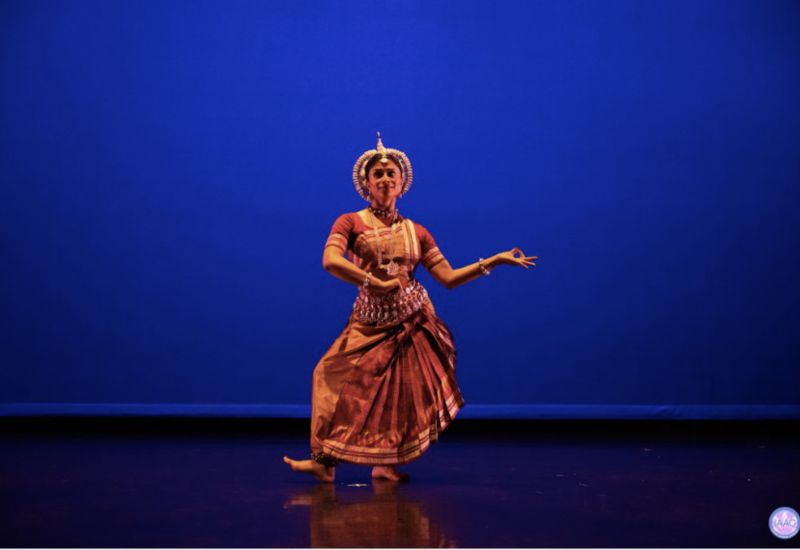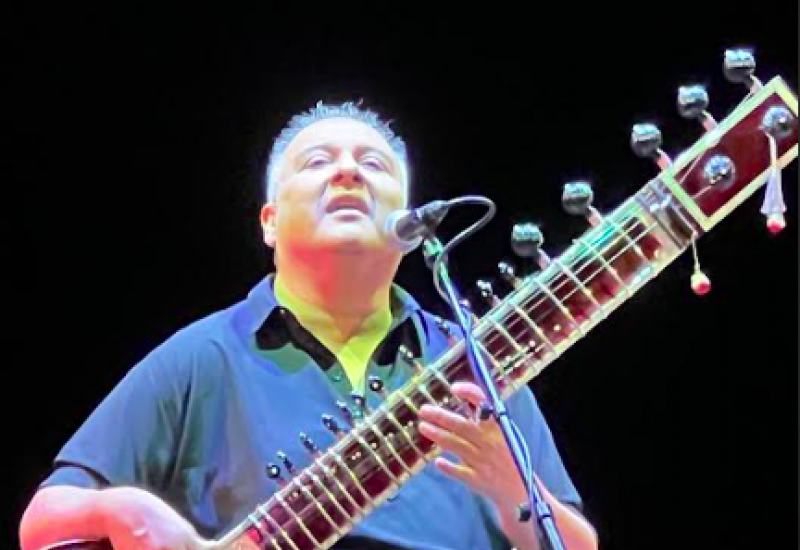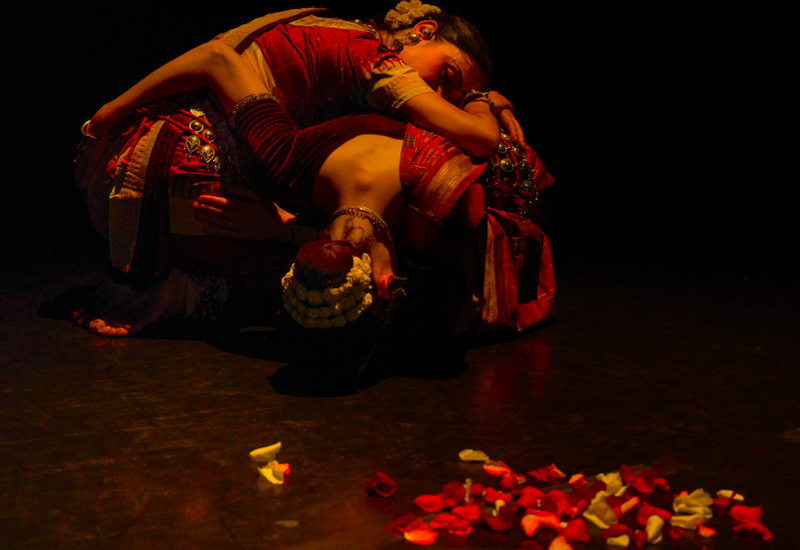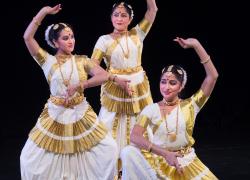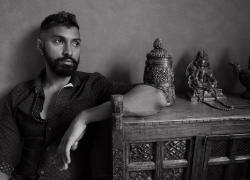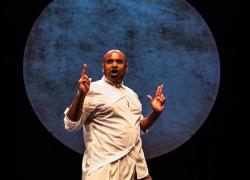Rising Voices: Women, Myth, and Movement at Aalokam’s We R Dancing Festival Day Two
By Dhruva Lakshminarayanan for Line and Verse
Across time and myth, women have been forces of power, courage, and transformation. Goddesses and mortals, rebels and nurturers, they find themselves in Tara’s quiet strength, in Surpanakha’s defiance, in Sita’s endurance and in Draupadi’s unyielding fire. They love, they grieve, they fight, and they reclaim spaces long denied. They rise, resist, and shatter the narratives that have sought to confine them, boldly claiming their place, their voice, and their story in a world that too often tries to silence them.
Day 2 of the Aalokam We R Dancing Festival featured five powerful performances exploring identity, mythology, and self-expression. The Aalokam Dance Company opened with Khela, a vibrant exploration of rhythm and connection, followed by Tara by Bharathi Penneswaran, offering a spiritual contrast to the opening piece. We then saw Maithili Patel’s kathak solo, Aatman, which was a voyage of self discovery through the eyes of mythical characters, and then Aishwarya Madhav’s Who Am I then took to the stage, examining individuality through contemporary movement. The night concluded with Bharathi Penneswaran’s I Am Surpanakha, reclaiming a mythic voice with feminist force, embodying the festival’s spirit of innovation and reflection.
The event started off with Khela, a lively, playful dance celebrating women’s freedom, showing them engaging in hopscotch, double dutch and other games. The performance highlighted the joy, creativity, and ability of women to revel when unconfined, capturing a sense of liberation and carefree expression through movement. The piece was presented in the Shilpanatanam style, which has been thought out and developed by Maya Kulkarni. The style positions the body as a living sculpture, moving through rhythm and gesture, and explores how form and movement come together to tell a story. It was nice to witness the length and breadth of the stage being explored to its full potential with the use of widely varied formations and combinations, and the plethora of colors in the costume coming together created a pleasing milieu. The use of comedic elements in the piece, such as the teams mocking or pleading with each other to underline the narrative, was also very effective. With a bit more rehearsal, the performance had the potential to be more polished, as moments of slight variation in gestures and expressions could be further refined to enhance the dancers’ synchronicity.
The next act was Bharathi Penneswaran’s Tara, where the audience witnessed, in meticulous detail, the goddess’ origin story: where varied versions of her, Green for protection, White for healing, Red for power, Black for fierce guardianship, and Yellow and Blue for abundance and transformation, manifested from the tears of Avalokiteshwara, the compassionate one. Penneswaran made the fluid movements of Shilpanatanam entirely her own, seamlessly weaving them into the disciplined precision of bharatanatyam nritta. Music guided every emotion, with rigorous mridangam for fury, the haunting strains of violin for sorrow, and the gentle flute for moments of joy. Lighting played a significant role in the piece, accentuating movement and mood, casting shadows and highlights that danced alongside Bharathi all the way to the captivating red-hued climax.
Maitili Patel’s Aatman brought three distinct characters: Yashoda, Sita, and Draupadi, to life with remarkable skill, depth, and nuance. Her playful depiction of Krishna captured the mischievous energy Yashoda shares with him, making him feel vividly alive. Patel’s mastery of Abhinaya and novel storytelling techniques were witnessed in several instances; As she seamlessly transitioned between Krishna and Yashoda in milliseconds adding both charm and subtle humor every time and as she depicted Sita being stuck in the island of Lanka by showing water all around her. The transition from Sita to Draupadi was ingenious, symbolizing Draupadi’s birth from the same fire that engulfed Sita, creating a zero-break narrative thread. Kathak twirls vividly depicted Draupadi’s saree being removed in the court by Dushasana, amplifying the intensity and drama of the scene. Intentional silences between sequences, like when Krishna slept and awoke, added depth and context to the storytelling. The climactic moment of Draupadi washing her hair in Dushasana’s blood, with red lighting seeping through the space, was visually and emotionally striking, and lingered in the audience much after the performance was over. While it would have been wonderful to see more of the captivating kathak footwork alongside her remarkable expressions, Patel nonetheless delivered a breathtaking, inventive, and deeply moving performance, offering a refreshing and much-needed departure from the glitzy, showy kathak performances often seen recently.
Aishwarya Madhav’s Who Am I? was a mesmerizing exploration of identity and the passage of time, using the life stages of a tree as a metaphor for a woman’s journey. Through the clever and purposeful use of a mirror frame, Madhav portrayed the transition from childhood to adulthood with striking clarity, simultaneously reflecting both the ageless self and the evolving individual. The stage came alive with dynamic movements, thoughtful lighting, and theatrical gestures that perfectly mirrored the beat of the music, with every rhythm and nuance executed with precision. The turning movements between each life stage, evoking the ticking of a clock marking the passage of time, was effective and allowed the audience to position themselves on the timeline depicted. Costume, body language, and spatial transitions illustrated the changing seasons of life, connecting age and experience to the falling leaves of the tree. In a striking finale, she shattered the mirror and became a timeless version of herself, breaking the fourth wall and inviting the audience to celebrate not only her journey but the shared human experience.
The performance was fundamentally contemporary, yet it beautifully incorporated traditional kuchipudi elements, adding elegance and highlighting the dancer’s years of dedicated training. This seamless blend of tradition and innovation enriched the storytelling and elevated its impact. At the same time, it would have been compelling to see a less conventional journey depicted, moving beyond the stereotypical timeline of childhood, marriage, motherhood, and old age. A more path-breaking narrative could have added depth, offering fresh perspectives on the diverse experiences and identities of women beyond traditional expectations.
The stage was then graced by Bharathi Penneswaran, who presented "I Am Surpanakha", the final piece of the evening, which brought to life the complex story of Surpanakha, a woman shaped by love, loss, betrayal, and vengeance. After her husband is killed by Ravana, she seeks someone to help avenge him and turns to Rama. She is unexpectedly drawn to him, only to be betrayed when he cuts off her nose, deepening her anger and mistrust toward men. Torn between desire, fury, and grief, Surpanakha’s journey becomes a raw exploration of human emotion. Penneswaran’s performance gave voice, presence, and depth to a mythological figure often remembered only in fragments, creating a strikingly powerful and evocative piece.
The performance was successful in conveying the intense turmoil of a wronged woman in a way that felt grounded and powerful, coupled with a rich mix of voice, both recorded and live, and music. The piece was presented in the Shilpanatanam style witnessed in the piece earlier, combining sculptural movement with fluid gestures. Penneswaran’s portrayal of Surpanakha was remarkable, vividly capturing her struggle with perceived ugliness, the fleeting sense of beauty she experiences upon meeting Rama, and the devastating loss and betrayal that follow, conveying her anger, vulnerability, and transformation with striking emotional depth.
The anguish of Surpanakha’s nose being cut was vividly expressed through Kathakali-inspired raw screaming, adding a visceral intensity to the performance. The final vocals were deeply moving, though it might have been more effective if the opening voiceover had been rendered live for greater continuity. Overall, the piece was enriching and compelling, blending theatricality, classical technique, and raw emotion. Some musical transitions between scenes felt abrupt, slightly disrupting the flow. A smoother score and more sustained continuity from the start could have strengthened the narrative, creating a more cohesive and powerful emotional journey for the audience.
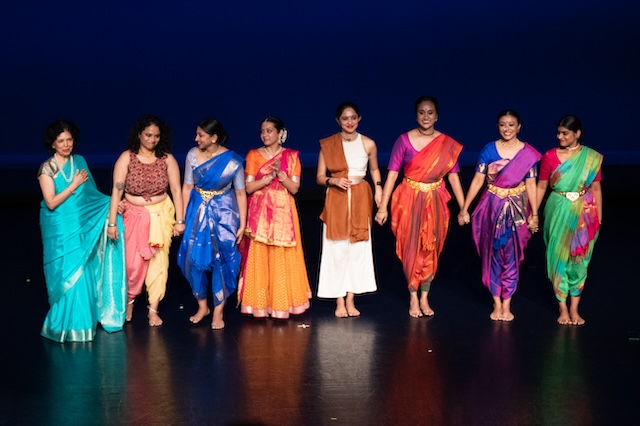
The Aalokam We R Dancing Festival’s second day was a celebration of women’s power, resilience, and creativity, seamlessly blending tradition with contemporary innovation. Through each performance, dancers brought mythology, identity, and emotion to life, offering the audience a rich, immersive journey that honored the past while boldly reimagining what dance can express today.

